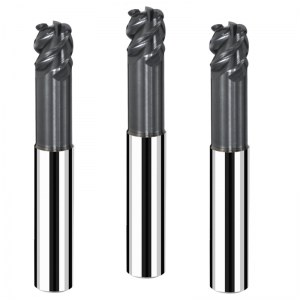
When cutting graphite material, its high abrasiveness will make the standard carbide cutting tool rapid wear, and wear the tool will not be able to accurately cut out the required complex geometric shape. When milling graphite, the tool path and milling method are not the most critical factors, and the type of milling cutter usually depends on the shape of the graphite electrode. As the diamond-coated cutter has excellent wear resistance, it is widely used in graphite milling. Diamond grown on a carbide tool base creates a wear-resistant coating that is extremely high in hardness and can significantly extend tool life. The life of the diamond-coated tool is 10-30 times longer than that of the uncoated carbide tool.
For example, when a complex graphite electrode of 152.4 mm square is machined with an uncoated carbide ball milling cutter with a diameter of 12.7 mm, the sharp edge and detail features of the milling cutter are usually about 4 hours after milling Began to peel off. And a diamond-coated cutter can be more than 98 hours of continuous milling, the cutting edge will not occur peeling off.
The sharpness of the cutting edge of the milling cutter is particularly high when machining certain graphite workpiece shapes (eg thin ribs), sharp geometric profiles and small size workpieces. In such processing, the use of 2-3μm thick diamond coating can extend the tool life and keep the edge sharp. Because of this relatively thin diamond coating cost is low, it is very suitable for the tool life requirements are not too high low-end processing. While the typical thickness of 18μm diamond coating is mainly used for high tool life requirements of high-end processing.
The use of thinner diamond coatings makes it impossible for moldmakers who produce smaller batches and want to reduce tool costs without sacrificing tool life in order to reduce costs. They can still play a real diamond-coated carbide cutting tool performance advantages while at the same time using thinner diamond coatings to meet their specific processing needs. Today’s diamond coating thickness range is roughly 2-25μm.
The optimum tool for a particular process should depend not only on the material being cut but also on the type of cutting used and the milling method used. By optimizing the tool, cutting speed, feedrate and machining programming skills, you can produce parts faster and better at lower processing costs.